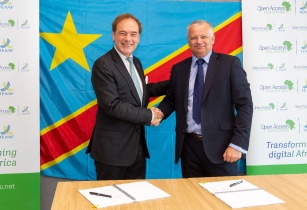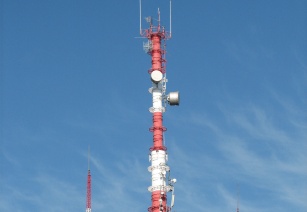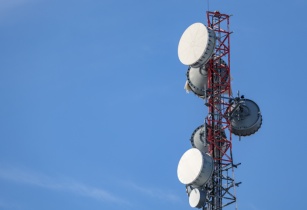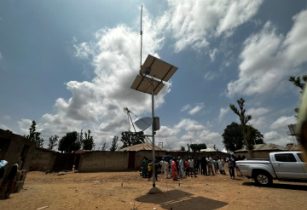How Intelsat has continued to innovate in Africa, meeting the demand for critical infrastructure from communications providers and broadcasters.
p>How Intelsat has continued to innovate in Africa, meeting the demand for critical infrastructure from communications providers and broadcasters.
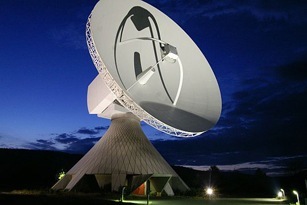 Intelsat has been offering innovative solutions to Africa since 1965 — the first to introduce satellite services in the region, the first to launch pan-regional broadband networks in many African nations and, most notably, was the first satellite operator to bring cellular backhaul services to the region and offer satellite technology as a vehicle to expand healthcare and education throughout the continent.
Intelsat has been offering innovative solutions to Africa since 1965 — the first to introduce satellite services in the region, the first to launch pan-regional broadband networks in many African nations and, most notably, was the first satellite operator to bring cellular backhaul services to the region and offer satellite technology as a vehicle to expand healthcare and education throughout the continent.
Intelsat’s long-standing leadership has provided a communications infrastructure that has extended voice, data and media services to the most remote regions of the continent. Today, Intelsat has 25 satellites serving the region, supporting over 200 customers in Africa, including more than 40 mobile operators.
Intelsat intends to pursue actively this development and plans to bring significant capacity to the continent.
Purchased in October 2009, ProtoStar 1, renamed Intelsat-25, was added to Intelsat’s Atlantic fleet. Covering most of Africa, its capacity allows Intelsat to support the growth requirements of its customers on the continent, including wireless operators and broadband service providers.
Furthermore, the project New Dawn — a joint venture between Intelsat and a South African investor group led by Convergence Partners — will provide new capacity and services specifically designed to meet the changing communications needs of Africa.
The Intelsat New Dawn satellite will serve Africa’s un-met demand for critical communications infrastructure and address capacity constraints facing the region.
The satellite, planned to begin delivering services in Q1 2011 from its 33º East orbital location, is ideal to service the entire African continent through wireless backhaul, broadband, direct-to-home and video applications.
Nearly 80 per cent of the satellite’s C- and Ku-band transponder units are under contract, with pre-launch commitments received from leading wireless, network and video service providers such as Vodacom International Ltd., Gateway Communications Africa (UK) Ltd., Zain Nigeria and Gilat Satcom.
Growing Demand
Africa has been one of the fastest growing regions for fixed satellite services in recent years, fuelled by demand for critical infrastructure from communications providers and television programmers.
Satellite can reach everywhere, linking the remotest parts of the continent to major centres where fibre may be available, via an affordable communication infrastructure that is easy to install and maintain.
Satellite connectivity continues thus to offer an ideal and necessary redundancy solution to fibre.
However, the tremendous growth rate of telecommunications across Africa means that the ‘complementarity’ of satellite and fibre connectivity is essential to meet the existing demand and ensure greater connectivity.
The powerful combination of fibre connectivity with the versatility of satellite technology will form the essential backbone for further socio-economic development.
Helping broadcasters and programmers meet global challenges
Broadcasters continually search for new ways to bring the highest quality programming to viewers.
This leads to new challenges, including the need to cover live special events, provide HD content and deliver an increasing quantity of programming from anywhere in the world.
Programmers around the world frequently turn to Intelsat’s Special Events Team to help deliver popular live events to audiences around the globe.
In fact, Intelsat has transmitted coverage of every Olympic Games since 1968, and most recently distributed the 2010 Winter Olympics, and the 2010 FIFA World Cup to an international audience.
Intelsat provided global transmission services for the World Cup in South Africa using its terrestrial platform, IntelsatONESM, to complement the distribution capabilities of its fleet.
A total of nine Intelsat satellites provided more than 900MHz of capacity specifically for Occasional Use Services to transmit the World Cup matches.
The satellites included: Intelsat 907, located at 332.5°E; Intelsat 11, located at 317°E; Intelsat 12, located at 45ºE; Intelsat 10 located at 68.5°E; Intelsat 702 located at 66°E; Intelsat 904 located at 60°E; and the Intelsat 10-02 located at 1°W.
In addition, Intelsat relocated its Intelsat 709 and Intelsat 705 satellites to 55°E and 330.5ºE, respectively, specifically to meet the capacity demand for broadcast services of the event.
Along with offering satellite capacity, Intelsat’s special events team was on-site to provide services for rights-holding and non-rights-holding broadcasters.
Intelsat Managed Services included platforms for encoding, multiplexing and compression in high definition and standard definition, teleport services and fiber circuits from South Africa to the IntelsatONE network inter-connect in London.
In cooperation with its media partners Aberdeen House Sports Management and VCSS, Reuters Global Broadcast Services Partner, Intelsat provided play out and live shot transmission services from event locations at Soccer City Stadium and Coca-Cola Park Stadium in Johannesburg, Green Point Stadium in Cape Town and Moses Mabhida Stadium in Durban.
Flavian Bachabi, Intelsat VP for Africa










